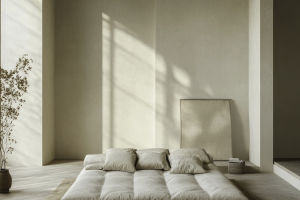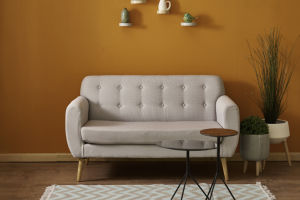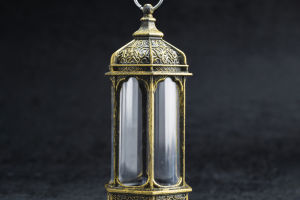Hey there, Lykkers! We all love the convenience of adhesive hooks, right? They’re super easy to use and can help organize our spaces without the hassle of nails or screws. But before you start hanging anything and everything with these sticky little wonders, there are some important things you should know.
Not all items are suitable for adhesive hooks, especially when it comes to heavier, fragile, or irreplaceable objects. We chatted with expert designers to bring you a list of things you should never hang using these adhesive hooks. Let’s dive in!
1. Mirrors: Not Worth the Risk
Mirrors are one of the biggest no-nos when it comes to adhesive hooks. Interior designer Ana Cvetkovic warns that adhesive hooks simply can’t support the weight and fragility of glass.
"You might think the adhesive will hold, but eventually, your mirror could come crashing down, shattering into pieces," she says. For mirrors, especially large ones, it’s best to use metal cleats drilled into solid wall studs.
2. Framed Artwork: Not Just for Walls
Framed pieces, whether they're paintings or photographs, should never be hung using adhesive hooks. The weight of the frame adds unnecessary strain on the hook, and even strong adhesives can fail over time due to temperature changes and humidity. Willow Wright, a home decor expert, explains that the risk of your artwork falling and damaging both the frame and the wall is too high. Always use a secure hanging method like nails or picture-hanging wire for framed art.
3. Artwork (Especially Valuable Ones)
It’s tempting to use adhesive hooks for hanging artwork because they’re easy and quick, but designer Marcy Kelman advises against it. "Whether it’s a wooden or metal frame, adhesive hooks just can’t support the weight," she says. This is especially true if the artwork is of sentimental or monetary value. Protect your treasures and hang them properly with a more secure solution.
4. Vintage and Fragile Pieces
Vintage pieces, such as ceramic plates, antique vases, and blown-glass items, are often delicate and irreplaceable. "Adhesive hooks just can’t support the weight and fragility of these items," says Wright. If your vintage items fall, they can get damaged or even ruined. For fragile items, always use secure, appropriate hangers or displays, such as shadow boxes or sturdy shelves.
5. Sentimental Mementos: Keep Them Safe
We all have those special mementos—maybe your grandmother’s wedding veil or a cherished letter from a loved one. Designer Cvetkovic advises never to trust adhesive hooks with such irreplaceable items. "Even if they aren’t breakable, these items hold emotional value," she says. Instead, use secure mounting methods that will ensure they stay safe.
6. Irreplaceable Items: One-of-a-Kind Things
Whether it’s a family heirloom or a rare collectible, anything irreplaceable should never be hung with adhesive hooks. Wright strongly recommends drywall anchors for hanging these items, as they provide a more secure and permanent solution. Trust us, it’s not worth risking your irreplaceable items for the benefit of convenience.
7. Shelves: A Heavy Load
Most adhesive hooks aren’t designed to hold heavy items like shelves, which require support from strong wall anchors. Kelman explains, "The weight capacity of most adhesive hooks is limited to just a few pounds, and they’re sensitive to humidity and temperature." So, for shelves—especially floating ones—make sure you’re using proper screws, anchors, or bolts to secure them to the wall.
What You Can Hang with Adhesive Hooks
Now that we’ve covered the big "don’ts," let’s talk about what you can safely hang with adhesive hooks. These hooks are perfect for light, temporary items like:
- Hairdryers
- String lights
- Baseball caps
- Keys
- Measuring cups
- Holiday wreaths
In short, adhesive hooks are best used for smaller, lightweight items and should be seen as a temporary solution. They're ideal for renters or dorm rooms where you don't want to make holes in the walls but still need to hang a few things.
When it comes to home decor, safety should always come first. For heavier or fragile items, don’t take any chances with adhesive hooks. Use the right hanging method, and you’ll avoid costly damage and heartbreak. Happy decorating, Lykkers!


